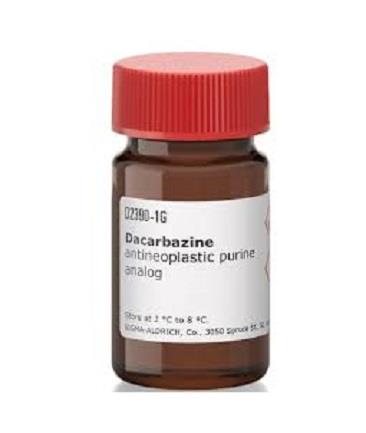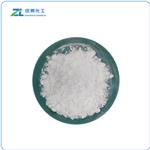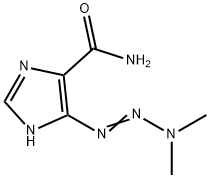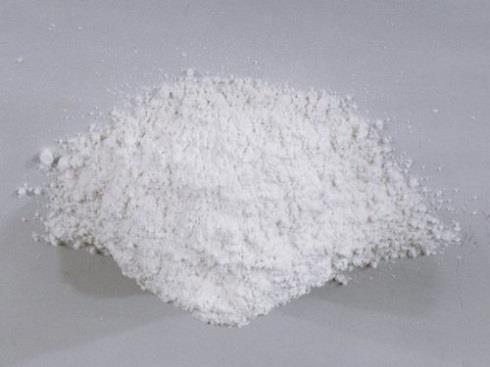Uses of Dacarbazine
Dacarbazine is a colorless to an ivory-colored solid belonging to the alkylating class of antineoplastic medications. Alkylating agents were the first anticancer molecules developed. Within this group of compounds, there are six major classes of agents; with dacarbazine categorized as part of the triazenes. The nitrogen mustards, the first of the alkylating agents, were approved for clinical use in the 1940s; while the triazene compound, dacarbazine, was not approved for use in humans until 1975. DTIC, or 5-(3,3-dimethyltriazeno) imidazole-4-carboxamide is an imidazole-carboxamide derivative synthesized for the first time in 1959. In order to synthesize the drug, nitrous acid was added to the 5-diazoimidazole derivative and this molecule was then treated in a solution of dimethylamine in methanol. Dacarbazine is used therapeutically primarily in melanoma and Hodgkin’s disease.

Uses
Dacarbazine is used therapeutically to treat various oncologic malignancies, typically in combination regimens. The primary FDA-approved indication for this compound is in treatment of metastatic malignant melanoma. In addition, it is approved as a second line therapy in Hodgkin’s disease when used in combination with other effective agents. Dacarbazine is also commonly used off-label in soft tissue sarcoma. Dacarbazine, like other chemotherapeutic treatment options, is being researched for its antineoplastic effects in other malignancies. In the future, dacarbazine may be useful as treatment for various oncology-related diseases.
Property
Dacarbazine is a colorless to an ivory-colored crystalline solid that must be reconstituted and administered as a parenteral agent for intravenous injection. It is available as a dry powder in 100, 200, and 500mg vials that when reconstituted have a standard concentration of 10 mg dacarbazine per 1 ml solution and a pH of 3–4. Vials of dacarbazine should be refrigerated (2–8°C) and protected from light. When exposed to light, dacarbazine is rapidly decomposed to 4-diazoimidazole-5-carboxamide. When exposed to high temperatures (250–255°C) dacarbazine decomposes explosively. Dacarbazine is slightly soluble in water. Dacarbazine may be diluted in either normal saline or dextrose 5% water. Reconstituted solution is stable for 24 h at room temperature (20°C) and 96 h under refrigeration (4°C); however, it is recommended by the manufacturer to use the product within 8 and 72 h, respectively. Dacarbazine should not be used if it turns pink, as this is a sign of decomposition.
Mechanism of action
The exact mechanism of action of dacarbazine is unknown; however, several proposed mechanisms have been made including inhibition of DNA synthesis by acting as a purine analog, alkylating agent, and interference with sulfhydryl groups. It is most commonly classified as an alkylating agent in the triazene group. While the active compound of dacarbazine, DTIC, is structurally similar to purines, its primary mechanism of action precludes the agent from being classified as an antimetabolite. Dacarbazine is a synthetic compound that is metabolically activated to the active alkylating metabolite methyl-triazeno-imidazole-carboxamide (MTIC) via the cytochrome P450 system, primarily CYP1A1, CYP1A2, and CYP 2E1. MTIC is rapidly tautomerized into an inactive derivative, 5-aminoimidazole-4-carboxamide (AIC), which is renally excreted. The entire process of activating DTIC occurs within 15 min of intravenous infusion. DTIC exerts its actions throughout all phases of the cellular cycle.
Effect
The antitumor effects of this compound are related to the induction of methyl adducts to DNA. The 70% of alkylation occurs at the N7position of guanine. The cytotoxic and mutagenic effects of MTIC are manifested through alkylation of DNA at the O6guanine position, accounting for 6–8% of methylated bases formed. This is primarily a result of generation of incorrect base pairing, leading to DNA double strand breaks and apoptosis.
);You may like
See also
Lastest Price from Dacarbazine manufacturers

US $200.00-95.00/kg2024-04-24
- CAS:
- 4342-03-4
- Min. Order:
- 1kg
- Purity:
- 99%
- Supply Ability:
- 20ton

US $0.00/g2023-11-15
- CAS:
- 4342-03-4
- Min. Order:
- 1g
- Purity:
- 98.55-101%;EP
- Supply Ability:
- 1000G


